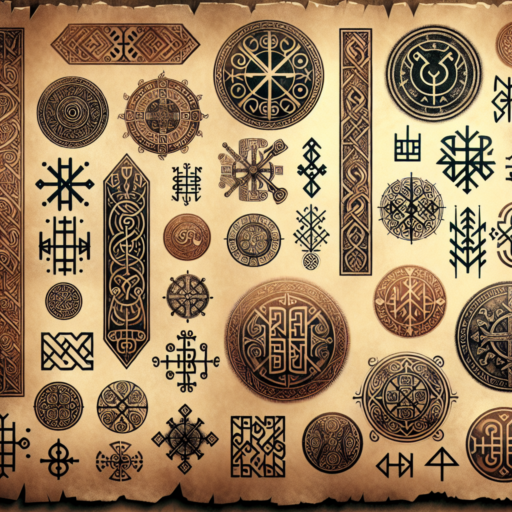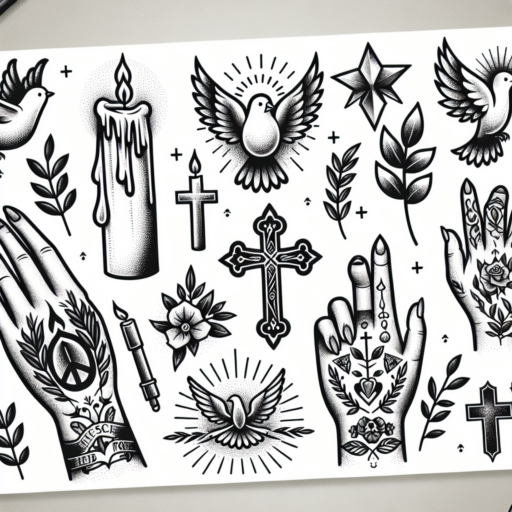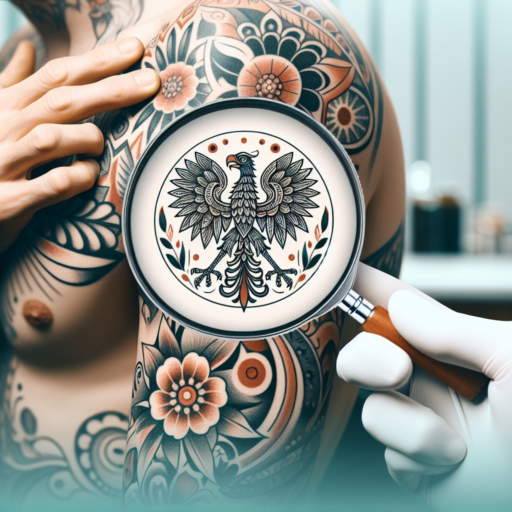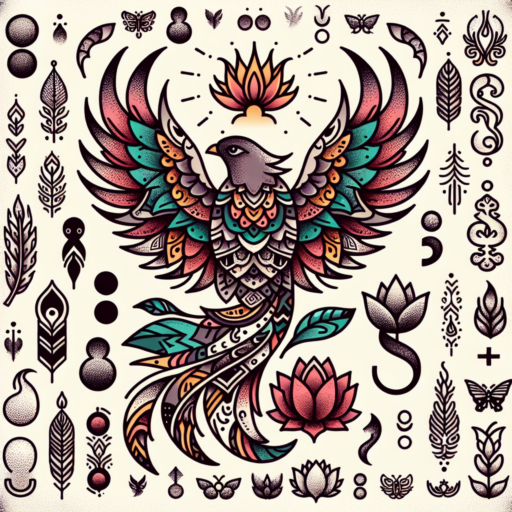Understanding the Roots of Traditional Germanic Tattoos
Exploring the rich spectrum of traditional Germanic tattoos opens a window into the profound spiritual and cultural world of ancient Germanic tribes. These tattoos were more than mere body decorations; they were powerful symbols of identity, protection, and allegiance. With a heritage shrouded in mystery, understanding the origins and meanings behind traditional Germanic tattoos requires delving into the scarce historical records and archeological findings.
Historical Significance and Interpretation: Ancient Germanic tribes, comprising various groups like the Goths, Vandals, Saxons, and Norsemen, left behind a legacy that stretches beyond the conventional understanding of tattooing. The lack of written records from these tribes themselves leads scholars to rely heavily on Roman accounts and Nordic sagas, which frequently depicted Germanic warriors adorned with intricate tattoos. These served not only as personal and tribal identifiers but also bore profound spiritual implications, connecting the wearers with their gods, ancestral heritage, and the natural world.
Symbols and Motifs in Germanic Tattoos
The symbols and motifs found in traditional Germanic tattoos are rich in mythology and nature, incorporating elements that held deep symbolic value to the tribes. Common themes include the tree of life, reflective of the interconnectedness of all things; wolves and ravens, closely associated with Odin, the chief god in Norse mythology; and intricate knotwork, symbolizing the endless cycle of life and death. These tattoos served as talismans against misfortune, markers of social status, and expressions of personal beliefs and commitments.
The Symbolism Behind Popular Germanic Tattoo Designs
Delving into the realms of Germanic mythology and history unveils a wealth of symbols, each with its own profound meaning and story. These symbols, which have traversed through centuries, inform much of the contemporary appeal of Germanic tattoo designs today. Notably, they encapsulate themes of fate, bravery, and connection to nature, elements deeply ingrained in Germanic folklore. Tattoos inspired by this tradition offer not just aesthetic appeal but a deep, symbolic resonance that wearers often connect with on a personal level.
The Valknut: A Symbol of the Fallen
The Valknut is one of the most recognizable symbols from Norse mythology, often linked to Odin, the god of war and death. Comprising three interlocking triangles, it is believed to represent the journey of warriors slain in battle to Valhalla. For tattoo enthusiasts, wearing the Valknut can be a gesture of respect towards ancestry, courage, and the complex interplay of life and death. Its inherent meaning speaks to the valor of facing one’s end with bravery, making it a potent symbol for Germanic-themed tattoos.
The Yggdrasil: Cosmic Connection
Another central element in Germanic symbology is the Yggdrasil, or the World Tree. This immense ash tree encompasses all the worlds within its branches and roots, connecting the heavens, the earth, and the underworld. As a tattoo motif, the Yggdrasil symbolizes growth, strength, and interconnectivity of life’s diverse aspects. It reminds wearers of the continuous cycle of life, death, and rebirth, and their place within this vast cosmic framework. Such tattoos often serve as a personal emblem of life’s interconnectedness and endurance.
How to Choose the Right Traditional Germanic Tattoo for You
Choosing the right traditional Germanic tattoo involves more than simply picking a design that catches your eye. The rich tapestry of Germanic history and symbolism means that each tattoo has a deep, cultural significance. To ensure that your ink not only looks impressive but also resonates with your personal values and heritage, consider the following aspects.
Understand the Symbols and Their Meanings
At the heart of Germanic tattoos are the symbols and motifs that have traversed centuries. From the valknut, representing the afterlife, to the vegvisir, a symbolic compass guiding one through life’s storms, each has its own unique meaning. Delve into the lore and origins of these symbols to find the one that truly speaks to you. It’s not just about aesthetics; it’s about finding a symbol that carries a message or value you hold dear.
Consider the Placement and Size
Traditional Germanic tattoos were not just about what was inked but also where. Certain symbols carried different meanings when placed on different parts of the body. For example, a tattoo on the arm might symbolize strength or bravery, while one on the chest might symbolize love and devotion. Furthermore, size plays a role in the visibility and impact of your tattoo. A large, detailed piece can be a bold statement, while a smaller, more subtle tattoo might suit a more introspective or personal reflection on your heritage.
Consult with a Specialized Tattoo Artist
Perhaps the most crucial step in choosing the right traditional Germanic tattoo is finding a tattoo artist who specializes in this style. An artist with experience and knowledge of Germanic symbols can provide invaluable advice on design, placement, and even historical accuracy. They can also ensure that your tattoo not only looks authentic but is also tailored to your personal narrative. This collaboration can help bring your vision of a traditional Germanic tattoo to life, creating a piece that is both beautiful and meaningful.
The Cultural Significance of Germanic Tattoos Through Ages
The exploration into the cultural significance of Germanic tattoos reveals a rich tableau of history, mythology, and identity that spans across various ages. From ancient tribes to modern enthusiasts, Germanic tattoos have served as potent symbols of strength, protection, and community belonging. These tattoos, often intricate with symbols derived from Norse mythology and runes, encapsulate tales of gods, heroes, and mythical beasts which were integral to Germanic folklore and beliefs.
During the early ages, tattoos in Germanic cultures were more than mere body decorations. They were deeply imbued with socio-cultural meanings and were believed to possess magical qualities. Warriors adorned their bodies with tattoos they believed could invoke the gods’ protection in battles. These markings symbolized courage, bravery, and status. The intricate patterns and symbols, such as the Helm of Awe (Aegishjalmur) or the Valknut, were thought to offer mystical protection and were indicators of allegiance to specific deities or ancestral lines.
In contemporary times, the fascination with Germanic tattoos has seen a revival, as individuals seek to connect with their heritage or the valor and spirit these symbols are perceived to embody. This modern incarnation continues to reflect the traditional values of strength, resilience, and connection to nature, seen in the detailed depictions of Norse mythology. Germanic tattoos today are not only a nod to ancient traditions but also a means to carry forward the stories and wisdom of old into the present day, making them a profound aspect of cultural identity and historical continuity.
Traditional Germanic Tattoos: Techniques and Styles
Exploring the rich tapestry of Traditional Germanic Tattoos unveils a profound connection to the mythology, beliefs, and history of ancient Germanic peoples. These tattoos, renowned for their intricate designs and deep significances, are more than mere body decorations; they are a testament to a culture deeply rooted in nature, the divine, and the warrior ethos. Delving into the techniques and styles of these traditional tattoos opens a window into a centuries-old practice that continues to captivate enthusiasts around the globe.
One cannot discuss the techniques behind Traditional Germanic Tattoos without acknowledging the meticulous hand-poking method, a time-honored technique that predates modern tattoo machines. This method, requiring a steady hand and a deep understanding of the craft, is revered for its ability to create highly detailed and symbolic artwork. The painstaking process, often involving natural inậents and tools, imbues each piece with a unique texture and depth, fostering a tangible connection between the artist, the wearer, and the ancient traditions they are honoring.
The styles of Traditional Germanic Tattoos are as varied as the stories and myths they represent. From swirling knotworks that symbolize the interconnectivity of life and eternity, to fierce depictions of Norse gods and warriors, each design holds a profound meaning. Animal motifs are also prevalent, with the eagle, bear, and wolf often featured for their symbolic attributes of strength, wisdom, and leadership. The-bold use of black and grey ink, with occasional splashes of color, accentuates the symbolic imagery, making each tattoo a bold statement of identity and belief.
No se han encontrado productos.
Incorporating Modern Aesthetics into Germanic Tattoos
In the realm of tattoo art, blending contemporary styles with ancient symbols can create visually striking and deeply meaningful designs. Germanic tattoos, rich in historical significance and intricate patterns, are experiencing a resurgence as tattoo enthusiasts seek to combine them with modern aesthetics. This fusion pays homage to the past while embracing current trends in the tattoo community, offering a unique canvas for self-expression and cultural identity.
The Role of Geometry in Modern Germanic Tattoos
Modern aesthetics often emphasize geometric shapes, clean lines, and minimalist designs which integrate seamlessly with traditional Germanic symbols such as runes, knots, and tribal patterns. By adopting a contemporary approach, artists are now enhancing these historic symbols with bold contrasts, simplified forms, and innovative shading techniques. The result is a harmonious balance between the old and the new, where the mystique of Germanic lore is preserved within the frameworks of modern design principles.
Color Theory in Contemporary Germanic Tattoo Art
Color plays a pivotal role in the adaptation of Germanic tattoos to fit modern tastes. While traditional Germanic tattoos primarily utilized black ink to highlight the complexity and detail of their designs, today’s reinterpretations frequently incorporate vibrant hues and watercolor effects. Artists skillfully apply color theory to breathe new life into ancient motifs, using shades and gradients to add depth, emotion, and personality to the tattoos. This exploration of color not only enriches the aesthetic appeal but also allows for a more personalized expression of heritage and symbolism.
In this dynamic interplay between ancient heritage and contemporary artistry, the evolution of Germanic tattoos continues to captivate and inspire. As these timeless symbols are reimagined through the lens of modern aesthetics, they offer individuals a unique way to connect with their ancestry while reflecting their own personal style and stories.
Care and Healing Tips for Your Germanic Tattoo
Getting a Germanic tattoo can be a profound way to connect with your heritage, or it could just be a personal preference for its unique symbols and meanings. Whatever your reasons, taking care of your new tattoo is crucial to ensure its longevity and vibrance. Ensuring proper healing and care for your Germanic tattoo will highlight the intricate designs and preserve the vividness of your ink.
Right after getting your tattoo, the healing process begins, and it’s essential to follow specific care instructions to prevent infection and ensure optimal healing. Covering your fresh tattoo with a protective film for the first few hours, followed by gentle washing with antibacterial soap, is paramount. Equally important is keeping your tattoo moisturized; apply a thin layer of tattoo-specific lotion or ointment to keep the area from drying out and flaking. This routine not only aids in healing but also keeps the lines of your Germanic designs sharp and clear.
Avoiding Sun Exposure and Harsh Chemicals
One crucial aspect of tattoo care that often goes overlooked is the importance of protecting your tattoo from the sun. UV rays can significantly fade the pigments, especially during the healing process. When going outdoors, covering your tattoo or using a high SPF sunscreen specifically designed for tattooed skin can make a difference in maintaining the vibrancy of your Germanic symbols. Additionally, avoiding swimming pools or soaking in baths during the initial healing phase is vital, as chlorine and excessive moisture can hinder the healing process.
Notable Tattoo Artists Specializing in Traditional Germanic Ink
Exploring the world of traditional Germanic tattoos reveals a rich tapestry of history, symbolism, and artistry. This ancient form of expression, which has been practiced for centuries, is being kept alive by a group of notable tattoo artists who specialize in Germanic designs. These artists draw on a wealth of cultural motifs, from intricate knotwork to mythological beasts, embodying the strength and spirit of the historical Germanic tribes.
Among these talented individuals, certain names stand out for their dedication to the craft and their unique ability to blend ancient designs with modern tattooing techniques. They utilize a palette of bold colors and sharp contrasts to breathe new life into traditional motifs, ensuring that each piece is both a homage to the past and a striking contemporary artwork. Their studios, scattered across the globe, serve as hubs where enthusiasts of Germanic culture can experience these timeless designs firsthand.
Their portfolios are a testament to the enduring appeal of Germanic tattoos, showcasing a range of designs from the Helm of Awe, meant to offer protection and invoke fear in enemies, to the Tree of Life, symbolizing connection and growth. Through their work, these artists act as custodians of Germanic heritage, ensuring that the symbols and stories that shaped this ancient culture continue to inspire and resonate in the modern era.




